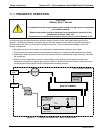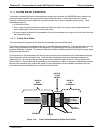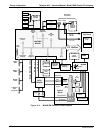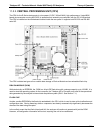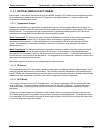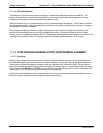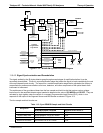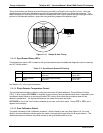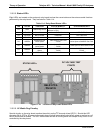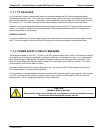
Theory of Operation Teledyne API – Technical Manual - Model 300E Family CO Analyzers
242
11.5.3.4. IR Photo-Detector
The IR beam is converted into an electrical signal by a cooled solid-state photo-conductive detector. The
detector is composed of a narrow-band optical filter, a piece of lead-salt crystal whose electrical resistance
changes with temperature, and a two-stage thermo-electric cooler.
When the analyzer is on, a constant electrical current is directed through the detector. The IR beam is focused
onto the detector surface, raising its temperature and lowering its electrical resistance that results in a change in
the voltage drop across the detector.
During those times that the IR beam is bright, the temperature of the detector is high; the resistance of the
detector is correspondingly low and its output voltage output is low. During those times when the IR beam
intensity is low or completely blocked by the GFC Wheel mask, the temperature of the detector is lowered by the
two-stage thermo-electric cooler, increasing the detector’s resistance and raising the output voltage.
11.5.4. SYNCHRONOUS DEMODULATOR (SYNC/DEMOD) ASSEMBLY
11.5.4.1. Overview
While the photo-detector converts fluctuations of the IR beam into electronic signals, the Sync/Demod Board
amplifies these signals and converts them into usable information. Initially the output by the photo-detector is a
complex and continuously changing waveform made up of Measure and Reference pulses. The sync/demod
board demodulates this waveform and outputs two analog DC voltage signals, corresponding to the peak values
of these pulses. CO MEAS and CO REF are converted into digital signals by circuitry on the motherboard, then
used by the CPU to calculate the CO concentration of the sample gas.
Additionally the synch/demod board contains circuitry that controls the photo-detector’s thermoelectric cooler as
well as circuitry for performing certain diagnostic tests on the analyzer.
04288D DCN5752



